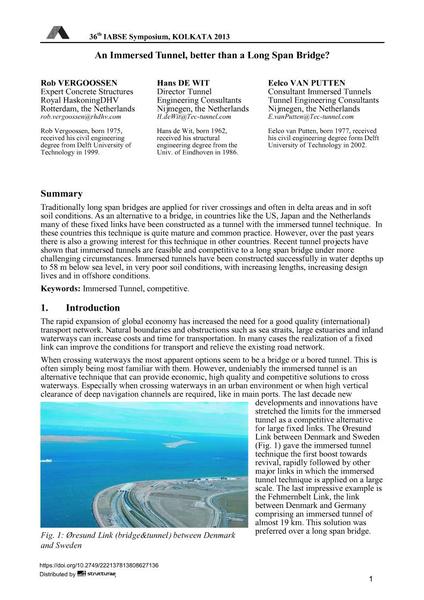An Immersed Tunnel, better than a Long Span Bridge?

|
|
|||||||||||
Détails bibliographiques
| Auteur(s): |
Rob Vergoossen
Hans De Wit Eelco Van Putten |
||||
|---|---|---|---|---|---|
| Médium: | papier de conférence | ||||
| Langue(s): | anglais | ||||
| Conférence: | IABSE Symposium: Long Span Bridges and Roofs - Development, Design and Implementation, Kolkata, India, 24-27 September 2013 | ||||
| Publié dans: | IABSE Symposium Kolkata 2013 | ||||
|
|||||
| Page(s): | 1-8 | ||||
| Nombre total de pages (du PDF): | 8 | ||||
| Année: | 2013 | ||||
| DOI: | 10.2749/222137813808627136 | ||||
| Abstrait: |
Traditionally long span bridges are applied for river crossings and often in delta areas and in soft soil conditions. As an alternative to a bridge, in countries like the US, Japan and the Netherlands many of these fixed links have been constructed as a tunnel with the immersed tunnel technique. In these countries this technique is quite mature and common practice. However, over the past years there is also a growing interest for this technique in other countries. Recent tunnel projects have shown that immersed tunnels are feasible and competitive to a long span bridge under more challenging circumstances. Immersed tunnels have been constructed successfully in water depths up to 58 m below sea level, in very poor soil conditions, with increasing lengths, increasing design lives and in offshore conditions. |
||||


